Beyond Oculus: The future of Virtual Reality gaming
Forget next-gen, VR is the most exciting and innovative arena in gaming
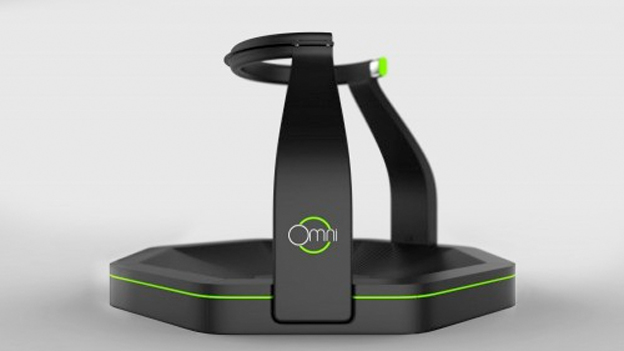
There are few tech sectors prompting as much excitement and intense chatter as the dawn of virtual reality gaming.
The Kickstarter-funded Oculus Rift headset gets most of the credit for the groundswell of interest, but the company Facebook recently purchased for over $2 billion, has become the poster child for a much larger movement. A movement that promises to inflict the single most important shift in the way we experience videogames, since they moved from the arcade to the home.
From start ups like Virtuix, Avegant and GameFace standing tall on the bleeding edge, to tech giants like Sony, Samsung and Google realising they must be on board, the movement is growing fast.
- Want PC gaming on the go? Check out the best gaming laptops
While this year's E3 gaming expo in Los Angeles was supposed to be all about the games and what would justify an Xbox One or PS4 purchase, most attendees came away chatting about VR.
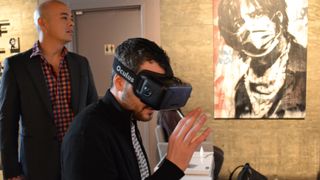
"The first time I tried the Oculus Rift, you know the old, duct-taped together prototype? It felt like the first time I held an iPhone," Paul Better, the co-creator of hit mobile game Words With Friends told TechRadar.
"I knew I was experiencing something that in my mind shouldn't have existed for another five to ten years yet. I instantly knew I wanted to wanted to play all of my games on it and, just like the iPhone all those years ago, I knew I wanted to make games for it."
Bettner, whose third-person VR platform game for Oculus, Lucky's Tale, stole the show at E3 2014, is a part of a new fellowship inspired to chart a new course following their experiences with Oculus.
Get the best Black Friday deals direct to your inbox, plus news, reviews, and more.
Sign up to be the first to know about unmissable Black Friday deals on top tech, plus get all your favorite TechRadar content.
Put your Game Face on
Another of those companies is GameFace Labs. While Oculus is a wired peripheral for high-powered gaming PCs, the GameFace headset provides a more inclusive solution. It's a self-contained, wireless, all-in-one unit running on a custom Android-based Virtual Reality operating system.
Now in its fifth iteration, the GameFace prototype has a 2.5k display (the highest in VR), has its own lens technology (having previously borrowed a pair from the Rift) and is powered by the powerful new Nvidia K1 SoC, which offers desktop-class graphics and lower latency than before. Importantly, that means less nausea.
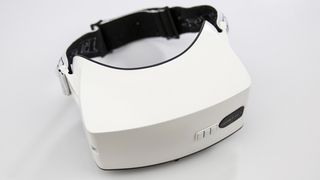
GameFace Labs claims to be the company that will bring VR to the mainstream with an accessible device, a content distribution platform to unite game developers and an open VR-based UI that allows other hardware, even phones shoved into the life-hacking Google Cardboard headset or the proposed VR device from Samsung, to capitalise.
With the hardware improving all the time, "the vast majority of the R&D now relates to software," Briton Mason told us.
"We've built an overlay that can be loaded onto any Android device to create a living virtual reality environment. Instead of using the touchscreen, users can just look at elements in the room to load the games. In the next 5 years there'll be more and more Android based VR devices as advancements in mobile SoCs are far outpacing desktop and the gap is closing fast."
Another member of the new breed of VR believers is Avegant. Its Glyph headset has raised $1.5 million via Kickstarter. It may look like a pair headphones with an oversized headband, but within that band is a unique VR experience that projects images to the back of our retinas and reflects right back.
It's free of platform loyalties and requires just a HDMI out to connect to games consoles, iOS and Android devices, Blu-ray players or laptops.
Consulting the consoles
Oculus blazes the VR trail for hardcore PC gamers, companies like GameFace are doing it via Android, while the Avegant Glyph is promoting a platform agnostic future. However, it's important not to forget trusty consoles. Sony's Project Morpheus, which promises to bring VR to console gamers, was also shown off at E3.
As exciting as that may be, GameFace's Mason believes it may be tougher for consoles to pioneer VR than it will be for Android-powered standalone headsets.
"Console VR is a tricky one because you only upgrade every 5-7 years," he said. "That means you're stuck with the hardware from day one. Developers can use it more efficiently, but the core power stays the same. From a mobile SoC point of view you can slot in a new SoC ever year or every two years to keep up with the CPU and GPU advancements."
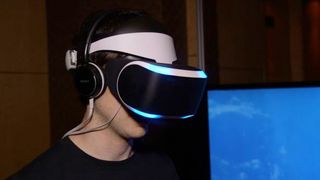
Of course, none of this is remotely relevant without the games. Existing titles can work with VR to a certain extent and can be easily altered to fit by GameFace, but it's developers like Paul Bettner who'll really determine whether VR makes the jump into the mainstream.
"The best way to build a game for a new platform is build something that can only exist on that platform. Just like Nintendo did it with the Wii and the 3DS."
The positive reception garnered by Lucky's Tale, a Mario-like 3D platformer, has changed the conversation surrounding which games will work best within the new medium.
Such is the nature of VR, there's been a preoccupation with first person action. Few had envisioned it as a vehicle VR for third-person games, Bettner tells us.
"We overthrew the assumption it had to be first person," he said.
In this case a turn of the head controls the in-game camera, rather than changing the character's perspective. You can look around corners, peep out obstacles and even launch weapons by looking in that direction. By all accounts, it works incredibly well, blowing minds at E3.
"You have a true sense of where you are in the world, a distinct special awareness," he added. "The act of playing a platformer in virtual reality is fundamentally easier. There's no extra stick needed to control the camera and you can judge distances way more accurately than when projected onto a TV. Even the new Mario game for Wii U, this stuff was more challenging than it should be."
Game innovation
Other developers at E3 had their own take. Street Luge for Project Morpheus pioneered that living roller-coaster experience, while Superhot for Oculus offered a Matrix-like experience where players can slow time to dodge bullets coming their way. EVE Valkyrie makes you a pilot in a space dogfight, while Alien: Isolation sees Xenomorphs terrifyingly running towards you attempting to eat your face off.
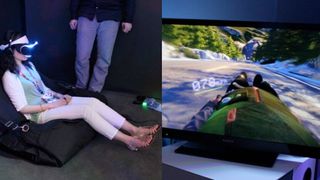
So which genre is going to give VR its Wii Sports moment?
"I think it's going to be something to do with space or something to do with horror. These are genres that will be mastered in VR pretty quickly," thinks Ed Mason at GameFace.
"This is such an unknown technology, we have to keep fiddling and finding what works best, but I do think there'll be an emergence of persistent online metaverse where people can drop in and out whenever they choose."
That last part might just be where Facebook's vision for the Oculus Rift as a mass communications tool really comes to the fore.
Holodecks - a (virtual) reality?
The hardware and software elements are falling into place through various means, but the Virtual Reality experience is currently limited to eyes and ears. Oculus is pushing developers towards traditional 'sit down experiences,' as it is essentially a wired peripheral, but wouldn't being able to move around in the world aid VR?
Jan Goetgeluk and his Virtuix Omni treadmill promise a future where players will be able to physically walk, run, jump and crouch within that battlefield, rather than just witness the carnage via their retinas.
Another Kickstarter-baked project, the $500 Omni pairs with a head-mounted display like Oculus. Players use special shoes baring pins that slip into the grooves in the treadmill. The result is VR in a physical environment, which has summoned 3,500 pre-order customers to part with cash.
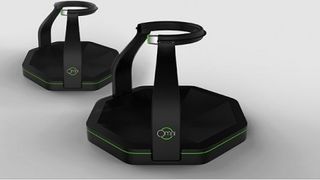
Goetgeluk also believes in a future for the Omni that goes beyond gaming. How about going for a jog through Skyrim or Minecraft every morning? How about virtual tourism? How about training and simulation? How about education? History classes will never be the same again when you can take a Bill and Ted-style Excellent Adventure through simulated experiences.
All this leads us nicely to the future. Headsets like the Rift DK2, which shipped to developers in early July, continue to improve at an alarming rate of knots. There's little doubt among the community that VR will become the next, great, inclusive gaming experience.
"Facebook buying Oculus has seen to that," Ed Mason tells us.
Goetgeluk is positive "virtual reality will become a mass market medium," while hardware improvements will help to eliminate the symptoms of nausea experienced by some gamers testing dev units by the time they become becomes commercially viable
He said: "The Oculus DK2 is already very good, but it will only get better. Visuals will improve, latency will decrease, accuracy and tracking will improve and it will become a better, more immersive VR experience."
Meanwhile, Better claimed "what we've shown at E3 was a Lucky's Tale demo, a tiny slice of the experience."

While excitement is palpable, it is still tantalisingly out of reach. Most folks we spoke to estimated a timescale of 2-3 years for VR's mainstream adoption, with systems anyone can walk into a store and buy and games specifically designed for the medium, rather than shoehorned or converted.
Enter the Matrix
However, Bettner is already excited about what lies beyond.
He said: "There's some really cool research that shows if you have a large enough room, say a 30ft by 30ft room that's empty you can actually use software to subtly rotate the environment without players knowing. That way they'll never hit the wall. Imagine that with an Oculus?
"That could turn in the next generation of theme park; the next version of Disney world.
"In VR you could build an experience where you could not only move around, but you could have things like wind blowing onto you or heat from a volcano. You could really make that an amazing experience."
After that, it could be AR gaming specs, such as the one's Microsoft patented last year allow people to play in the virtual and real worlds at the same time. That could be the key for enticing those less keen on the fully immersive experience, Bettner said.
Then the brain will be the final frontier. Within a couple of decades, it could be time to enter the Matrix.
"We're close to mastering VR from a sight and sound perspective. In the next 15 years we should be nearing Matrix-esque virtual reality so it's quite an exciting time."
Just remember - there is no spoon. But it sure will be fun pretending there is.
A technology journalist, writer and videographer of many magazines and websites including T3, Gadget Magazine and TechRadar.com. He specializes in applications for smartphones, tablets and handheld devices, with bylines also at The Guardian, WIRED, Trusted Reviews and Wareable. Chris is also the podcast host for The Liverpool Way. As well as tech and football, Chris is a pop-punk fan and enjoys the art of wrasslin'.
Most Popular


